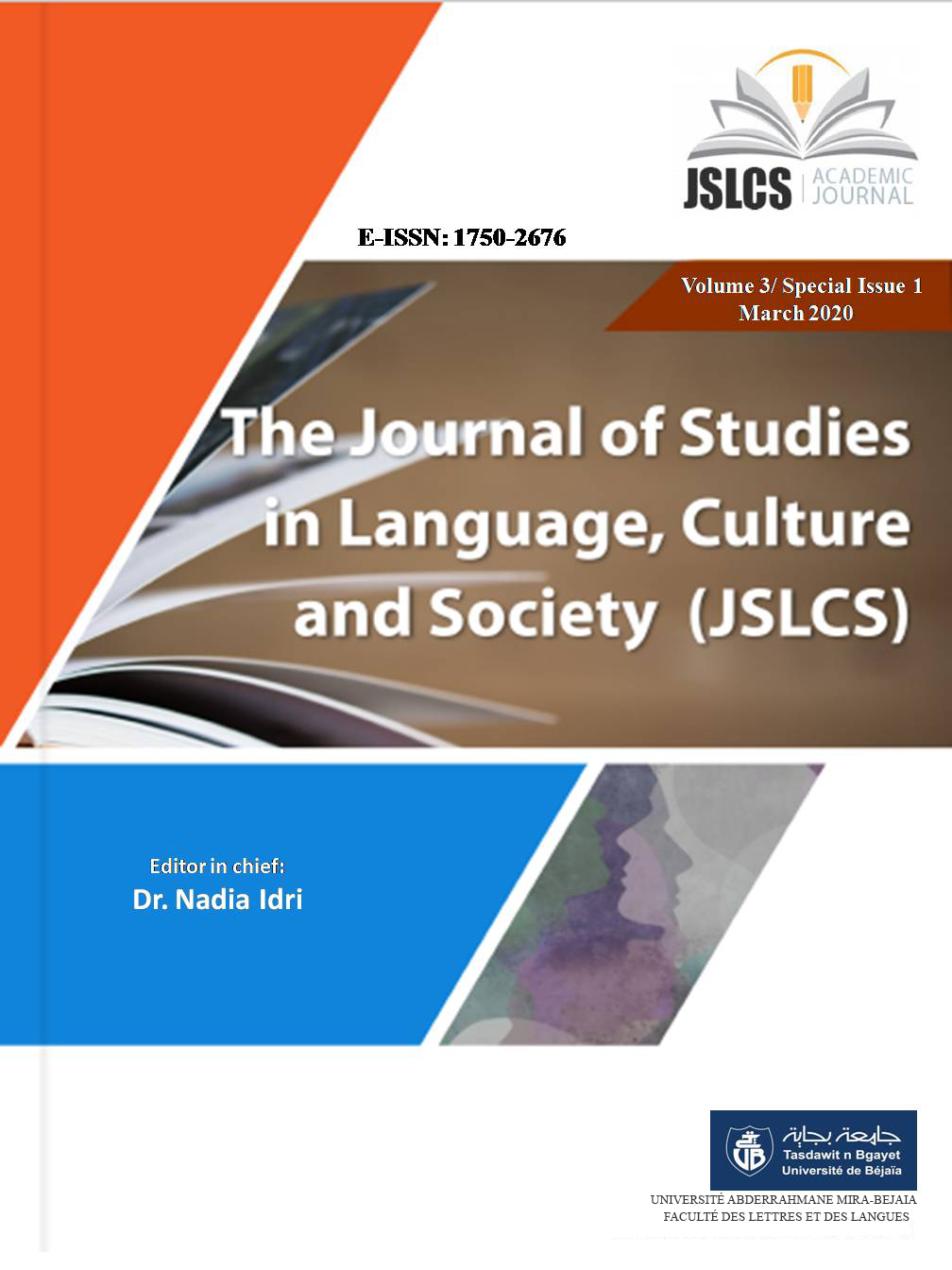Analysis of Algerian Students English Intonation Deviations with the Employment of Speech Analyzer and Praat Programmes
Keywords:
Algerian Arabic, EFL, intonation deviation, speech-processing programmeAbstract
Learners’ mispronunciations can be detected easily in a long stretch of speech in which the listener can discriminate differences in vowels, consonants, and prosody productions compared to native speakers’ English. Algerian students employing inappropriate intonation contours, which differentiate grammatical categories and speakers’ intentions, may lead to comprehension and communication problems. This paper aims at investigating the intonational errors produced by Algerian English as a Foreign Language (EFL) students and the extent to which Algerian Arabic interferes in the learning process of English tonal categories. This quasi-experimental study reports on the effect of providing audio-visual feedback to students’ pronunciations of English intonation with the use of Speech Analyzer, and the retrieval of pitch and intensity values with Praat during the third semester of the phonetic course at the Department of English, University of Guelma, Algeria. The experimental group of second year students (N=10) productions were compared to native speakers of American English control group (N= six, at the Diderot Paris 7 University, France) renditions in which both groups were subjected to non-random assignment. The applicability and contribution of these speech-processing programs in data manipulation, analysis, and synthesis are evaluated. The results display that the students’ intonation deviations were interpreted in terms of Algerian Arabic transfer or individual differences; therefore, their performances were perceived with a foreign accent. The implementation of these devices in teaching English intonation enables to estimate the degree to which such technologies are useful.
References
Aït Oumeziane, R. (1980-1981). Le Parler arabe de Constantine (Unpublished Doctoral Dissertation). Paris, Université Sorbonne Nouvelle Paris 3.
Benali, I. (2015). La focalisation dans les parlers algérois et oranais: étude prosodique (Unpublished Doctoral Dissertation). Université Diderot Paris 7-Sorbonne Paris Cité, Paris.
Benkirane, T. (1998). Intonation in western Arabic (Morocco). In D. Hirst & A. Di Cristo (Eds.), Intonation Systems: A Survey of Twenty Languages, (pp.345–359). Cambridge, UK: Cambridge University Press.
Benrabah, M. (1987).The Intelligibility of Algerian Speakers of English: A Phonetic/Phonological Study (Unpublished doctoral dissertation). London University College, London.
Celce-Murcia, M., Brinton, D. M., & Goodwin, J. M. (1996). Teaching Pronunciation: A Reference for Teachers of English to Speakers of other Languages. Cambridge: Cambridge University Press.
Chahal, D. (2001). Modeling the Intonation of Lebanese Arabic Using the Autosegmental-metrical Framework: A Comparison with English (Unpublished Doctoral Dissertation). Department of Linguistics and Applied Linguistics, the University of Melbourne.
Chun, D. M. (2002). Discourse intonation in L2: From Theory and Research to Practice. Amsterdam/Philadelphia: John Benjamins Publishing Company.
Cook, T. D., & Campbell, D. T. (1979). Quasi -experimentation: Design and Analysis Issues for Feld Settings. Boston, MA: Houghton Mifflin.
Crystal, D. (1975). Relative and absolute in intonation analysis. In D. Crystal (Ed.), The English Tone Voice: Essays in Intonation, Prosody and Paralanguage (pp.74-83). London: Edward Arnold.
Esling, J. H. (1992). Speech technology systems in applied linguistics instruction. In M. C. Pennington & V. Stevens (Eds.), Computers in Applied Linguistics: An International Perspective (pp. 244–272). Clevedon: Multilingual Matters.
Georgin, P. (1980). Esquisse phonologique et détermination nominale du parler arabe d'Alger (Unpublished Doctorate Dissertation). Université Paris VIII-Vincennes.
Grant, L. (2001). Well said: Pronunciation for Clear Communication. Boston: Heinle & Heinle Publishers.
Guella, M. (1983). A Linguistic Investigation of the Arabic Dialect of Nedroma (Algeria) (Unpublished Doctoral Dissertation).University of Manchester, England.
Guella, N. (1984). On Syllabication, Stress and Intonation in an Algerian Arabic Dialect. Etudes et Recherches en Linguistique Oran, 5 ,1-19.
Halliday, M. A. K. (1964). Intonation in English Grammar. Transactions of the Philological Society, 143–169.
Hamlaoui, N., & Bengrait, N. (2016). Using Better Accent Tutor and Praat for the Learning of English Intonation. Arab World Journal of English Studies, 7(3), 99-112.
Haydar, Y., & Mrayati, M. (1985). Etude de l'intonation, la courbe mélodique de phrases de l'arabe standard. Travaux de l'Insti tut de Phonétique de Strasbourg, 17, 73-118.
International Phonetic Association. (1999). Handbook of the International Phonetic Association: A Guide to the Use of the International Phonetic Alphabet. Cambridge, UK: Cambridge University Press.
Leclerc, J. (2009). Algérie : Situation géographique et démolinguistique. L'aménagement linguistique dans le monde. Université Laval. Archived from the original on 2010- 01-24.
Maamri, M. R. (2009). The Syndrome of the French Language in Algeria. International Journal of Arts and Sciences, 3(3), 77– 89.
Norlin, K. (1989). A preliminary description of Cairo Arabic intonation of statements and questions. Speech Transmission Quarterly Progress and Status Report, 1, 47-49.
Paterno, A. (2003). Handbook for Oral Readers of English as a Second Language. Philippine: Rex Book Store, Inc.
Rammuny, R. M. (1989). Instrumental and Auditory Analysis of Colloquial Jordanian Arabic. Zeitschrift für arabische Linguistik, 20, 23-42.
Reed, B. S. (2007). Prosodic Orientation in English Conversation. New York: Palgrave Macmillan.
Velluntino, F. R., & Schatschneider, C. (2004). Experimental and quasi-experimental design. In N. K. Duke & M. H. Mallette (Eds.), Literacy Research Methodologies (pp. 114-148). New York, NY: The Guilford Press.
Wells, J. C. (2006). English Intonation: An introduction. Cambridge: Cambridge University Press.








